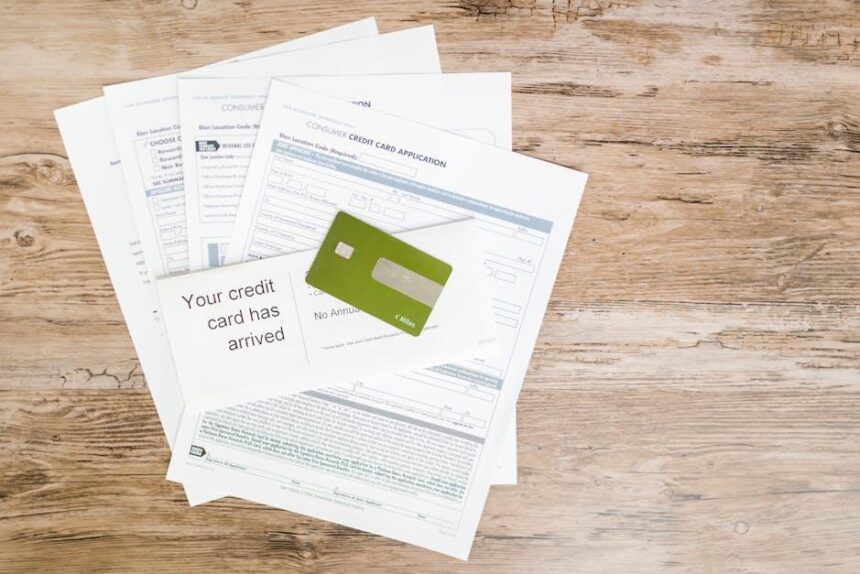In the ever-evolving landscape of real estate, navigating the home loan approval process can often feel like decoding a complex puzzle. As we transition into 2025, understanding the secrets behind securing a home loan becomes paramount for potential buyers seeking their dream homes. This article delves into the essential strategies and insights that can unlock your path to approval, offering you the knowledge needed to make informed decisions. Whether you are a first-time buyer or looking to refinance, mastering these techniques will empower you to approach lenders with confidence and clarity, ensuring a smoother journey toward homeownership.
Understanding the Evolving Landscape of Home Loan Criteria
As prospective homebuyers navigate the intricate pathways of securing a home loan in 2025, is essential. With rising interest rates and changing economic conditions, lenders have adjusted their requirements, making it crucial for applicants to stay informed.
Credit Scores: The foundation of any home loan application is your credit score. In 2025, a score of 620 or higher is typically required for conventional loans, while FHA loans may allow scores as low as 580. To improve your chances:
- Check your credit report for errors.
- Pay down existing debts.
- Avoid closing old accounts, as longer credit histories benefit your score.
Income Verification: Lenders are increasingly focused on stable and verifiable income. Be prepared to provide:
- Recent pay stubs or W-2 forms.
- Tax returns from the last two years.
- Documentation of additional income sources, such as bonuses or freelance work.
Debt-to-Income Ratio (DTI): Your DTI ratio measures how much of your monthly income goes towards paying debts. In 2025, most lenders prefer a DTI below 43%, though some may allow exceptions up to 50% under certain conditions. To manage your DTI:
- Calculate your monthly debt payments and divide that by your gross monthly income.
- Minimize new debt before applying for a loan.
Down Payment Requirements: The traditional 20% down payment is becoming less common as first-time buyers seek more affordable options. Here’s a quick comparison:
| Loan Type | Typical Down Payment | Notes |
|---|---|---|
| Conventional Loan | 3% – 20% | Private mortgage insurance (PMI) may apply if <20% is put down. |
| FHA Loan | 3.5% | Ideal for lower credit scores. |
| VA Loan | 0% | No down payment for eligible veterans. |
Loan Programs and Assistance: Several programs exist to help homebuyers, especially first-time buyers. Look out for:
- State-specific down payment assistance programs.
- Grants and forgivable loans from local housing authorities.
- Federal Housing Administration (FHA) and Veterans Affairs (VA) loans.
In summary, understanding the shifting criteria can position you favorably in a competitive market. Stay proactive by monitoring your financial health and leveraging available resources to tailor your home loan application effectively.

Essential Strategies for Strengthening Your Financial Profile
Building a strong financial profile is vital for securing a home loan in 2025. Here are some essential strategies to consider:
- Improve Your Credit Score: Your credit score is a key factor that lenders assess. Make timely payments, reduce outstanding debts, and consider working with a credit counselor if needed.
- Calculate Your Debt-to-Income Ratio: Lenders prefer a DTI ratio below 36%. To improve this, either pay off existing debts or increase your income.
- Maintain Stable Employment: Consistent employment history can enhance your application. Aim for at least two years in the same job or industry.
- Save for a Larger Down Payment: A down payment of 20% or more can not only lower your monthly payments but also eliminate private mortgage insurance (PMI).
- Consider Different Loan Types: Familiarize yourself with various mortgage options, such as FHA, VA, or conventional loans, to find the best fit for your financial situation.
| Loan Type | Down Payment Requirement | Eligibility |
|---|---|---|
| FHA Loan | 3.5% | Low to moderate income borrowers |
| VA Loan | 0% | Veterans and active-duty military |
| Conventional Loan | 5%-20% | Good credit and stable income |
Additionally, regularly check your credit report for errors and dispute inaccuracies promptly. Establishing a diversified credit mix, such as using both revolving credit (like credit cards) and installment loans (like student loans), can also boost your score. Lastly, engaging with a reputable mortgage broker or lender can provide personalized advice tailored to your situation, further enhancing your chances of approval.

Navigating the Documentation Maze for a Seamless Approval Process
Securing a home loan in 2025 requires navigating a complex landscape of documentation. Ensuring you have everything ready can help streamline the approval process and avoid unnecessary delays. Here’s how to effectively manage your documentation:
- Gather Basic Information: Start with personal details such as Social Security numbers, addresses, and employment history for at least the past two years.
- Financial Documentation: Prepare your financial records, including recent pay stubs, W-2 forms, and tax returns for the previous two years. Lenders typically require proof of income to assess your ability to repay the loan.
- Bank Statements: Collect your bank statements for the last two to three months, showing adequate funds for down payments and closing costs.
- Asset Verification: If you own other assets (like stocks or additional properties), be ready to provide documents proving ownership and current value.
Utilize a checklist to organize your documentation. Below is a simple table for your reference:
| Document Type | Frequency/Recency | Purpose |
|---|---|---|
| Pay Stubs | Last 2-3 months | Income verification |
| W-2 Forms | Last 2 years | Tax & employment history |
| Tax Returns | Last 2 years | Income verification |
| Bank Statements | Last 2-3 months | Funds for down payment |
| Asset Documentation | As needed | Show additional financial stability |
Additionally, be prepared to answer questions about your credit history. Credit reports from major reporting agencies like Equifax, Experian, and TransUnion can be crucial. Make sure you:
- Check your credit score regularly.
- Address errors promptly with the reporting agency.
- Understand how your score may affect your mortgage rate.
Lastly, communicate clearly and promptly with your lender. If they request additional information, respond quickly to avoid stalling the approval process. Providing clean, well-organized documentation can make a significant difference in achieving your home loan goals for 2025.

Leveraging Technology to Enhance Your Home Loan Experience
In today’s digital age, leveraging technology can significantly enhance your home loan experience, making the process smoother and more efficient. From online applications to automated underwriting, here are some ways technology can assist you:
- Online Pre-Approval: Many lenders, such as Quicken Loans and Rocket Mortgage, offer streamlined online pre-approval processes. This allows potential borrowers to get a better understanding of their budget and strengthen their offer when bidding on homes.
- Document Uploads: Securely upload necessary documents through platforms like DocuSign or lenders’ proprietary apps, reducing the need for physical meetings and expediting the process.
- Rate Comparison Tools: Websites like Bankrate and NerdWallet enable buyers to compare mortgage rates across various lenders, ensuring they make informed decisions that suit their financial goals.
- AI-Powered Tools: Use AI-driven chatbots for 24/7 access to assistance. These tools can provide instant answers to mortgage-related questions, making the information accessible at your convenience.
- Financial Apps: Employ budgeting apps like Mint or YNAB (You Need A Budget) to manage finances effectively, ensuring you’re in a strong position to handle monthly mortgage payments.
- Virtual Open Houses: With the rise of virtual tours and open houses, platforms like Zillow and Redfin allow you to explore homes without leaving your couch, saving time while narrowing down options.
Additionally, utilizing technology to enhance communication with your lender can be pivotal:
- Client Portals: Many banks now offer client portals where you can track your loan status in real-time, receive updates, and communicate directly with your loan officer.
- Electronic Signatures: Streamline the closing process with e-signatures, allowing you to sign documents from the comfort of your home.
- Lending Apps: Consider apps from traditional banks or fintech companies that allow you to manage your mortgage on-the-go, offering features like payment scheduling or refinancing options directly through your smartphone.
To summarize, technology not only simplifies the home loan process but also empowers borrowers to make informed decisions that align with their financial objectives. Embrace these tools for a better home loan experience:
| Technology | Benefit |
|---|---|
| Online Pre-Approval | Quick assessment of eligibility and budget clarity |
| Document Uploads | Faster processing time with less paper |
| Rate Comparison Tools | Ensures best interest rates are obtained |
| AI-Powered Tools | Instant assistance and support |
| Financial Apps | Better financial management and planning |

Future Outlook
As we approach 2025, unlocking the secrets to home loan approval becomes more crucial than ever. The landscape of borrowing is evolving, with new strategies and insights emerging to help you navigate the complexities of financial institutions. By understanding your credit profile, staying informed about market trends, and preparing your documentation meticulously, you can position yourself for success in the competitive housing market. Remember, each step you take brings you closer to turning your homeowner dreams into reality. Embrace these secrets, and let them guide you on your journey to securing that coveted loan approval. Your dream home awaits-take the plunge and make it happen!














